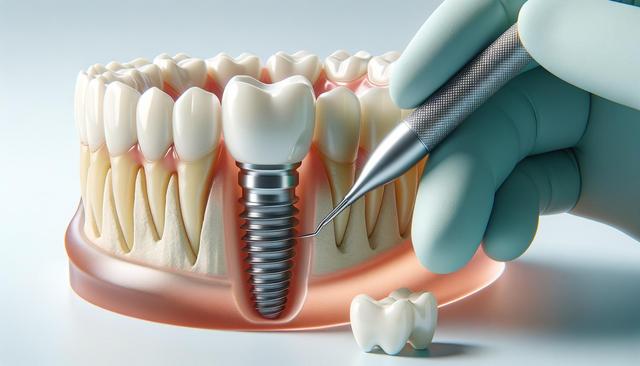What Are Dental Implants?
Dental implants are artificial tooth roots, typically made of titanium, that are surgically placed into the jawbone. Over time, the bone fuses with the implant in a process known as osseointegration. This stable foundation allows a dentist to attach a crown, bridge, or denture to restore the function and appearance of the natural tooth. Dental implants are a popular option for tooth replacement due to their durability, natural feel, and long-term effectiveness.
People often inquire about what are the methods of dental implants, as the procedure can vary depending on the individual’s oral health and needs. The most common methods include:
- Endosteal implants: Placed directly into the jawbone and commonly used for patients with sufficient bone density.
- Subperiosteal implants: Positioned under the gum but above the jawbone, typically recommended for patients who cannot undergo bone grafting.
- All-on-4 implants: A technique where a full arch of teeth is supported by just four implants.
Each of these methods has its own benefits and considerations, which a qualified dental professional can explain in detail based on a comprehensive evaluation.
Advantages of Dental Implants
Dental implants offer several advantages over traditional dentures or bridges. They provide a stronger bite force, help preserve the jawbone, and do not rely on adjacent teeth for support. This makes them a preferred choice for many individuals seeking a permanent solution to tooth loss.
Some of the key benefits include:
- Improved appearance and speech
- Enhanced comfort and ease in eating
- Preservation of facial structure and bone health
- Long-term cost efficiency with proper care
While some might initially be concerned about the price of dental implants, it’s important to consider the value they offer over time. Their durability and low maintenance can make them a cost-effective investment compared to other temporary restorations.
Understanding the Procedure
The dental implant process typically involves several stages, beginning with an initial consultation and diagnostic imaging. If necessary, preparatory procedures like bone grafting may be performed to ensure an adequate foundation for the implant.
The main steps include:
- Implant placement surgery
- Healing period (osseointegration)
- Abutment placement
- Attachment of the final restoration (crown, bridge, or denture)
This process may span several months, but the result is a stable and functional replacement tooth. Understanding the steps involved helps patients make informed decisions and set realistic expectations about the timeline and recovery.
Evaluating Cost and Accessibility
The price of dental implants can vary significantly depending on various factors such as the number of implants needed, the type of restoration, and the complexity of the procedure. Geographic location and the expertise of the dental provider also influence overall costs.
For individuals seeking cheap and quality dental implants, it’s important to strike a balance between affordability and care standards. While cost-effective options are available, they should never compromise the quality of materials or the experience of the practitioner. Some clinics offer financing plans or phased treatments to make implants more accessible.
Patients should ask detailed questions during consultations to understand the full scope of the procedure, potential additional costs, and what is included in the quoted price. Transparency in pricing helps avoid surprises and ensures that patients are fully prepared.
Maintaining Dental Implants
Once the implant process is complete, proper maintenance is crucial to ensure longevity and function. Fortunately, caring for dental implants is similar to caring for natural teeth. Daily brushing and flossing, along with regular dental check-ups, are essential to maintain oral hygiene and detect any issues early.
To keep implants in good condition, consider the following tips:
- Avoid chewing hard objects like ice or pen tips
- Use a soft-bristled toothbrush and non-abrasive toothpaste
- Schedule professional cleanings at least twice a year
- Inform your dentist about any discomfort or changes around the implant area
With consistent care, dental implants can last for many years, often decades, making them a reliable and sustainable choice for tooth replacement.
Conclusion: Making Informed Choices About Dental Implants
Dental implants are a valuable solution for those seeking long-term tooth replacement. Understanding what are the methods of dental implants, the procedure involved, and how to maintain them can help individuals make informed decisions about their oral health. While the price of dental implants may seem high initially, their lasting benefits and improved quality of life often justify the investment. For those exploring cheap and quality dental implants, careful research and consultation with qualified professionals are key to achieving satisfying outcomes. Informed patients are empowered patients—taking the time to understand the principles of dental implants is the first step toward a confident smile.




Leave a Reply